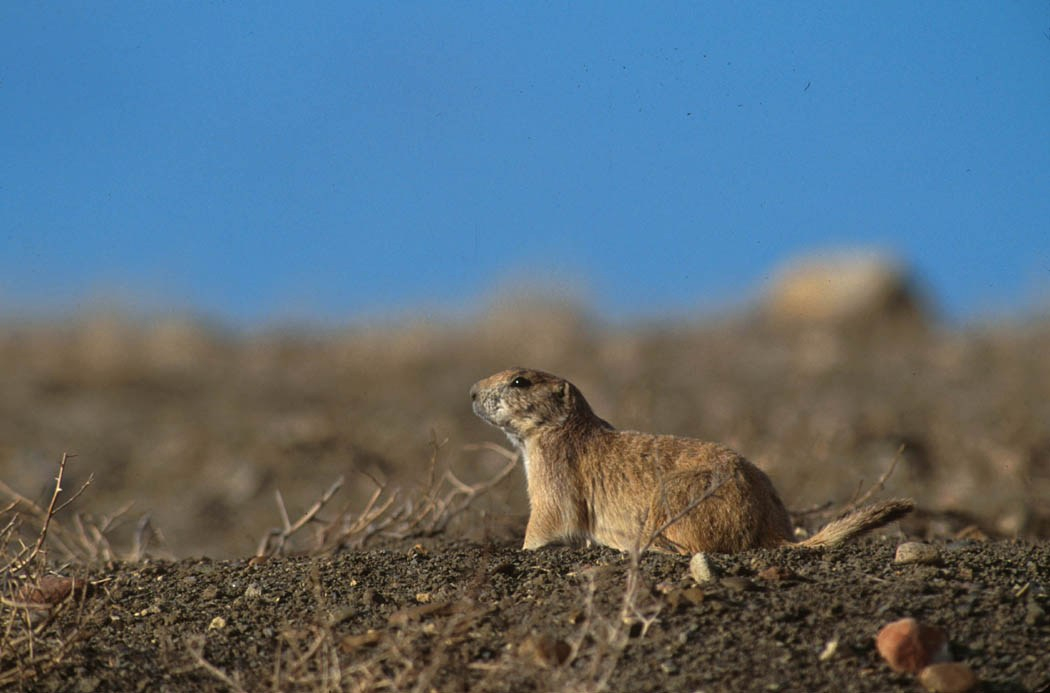Staff: It will cost $5-$7M, take 20-30 years to rid Boulder’s open space ag lands of prairie dogs

Tuesday, May 7, 2019
To completely remove tens of thousands of prairie dogs from more than 1,000 acres of Boulder-owned open space — without killing them — will cost the city $4.8-$7.3 million and take two to three decades, staff said in notes to council ahead of Tuesday’s meeting.
The open space department intends to request between half a million to nearly $1 million dollars over the next 3-4 years to to remove prairie dogs from 100 critically overrun acres. But there is still no plan for restoring more than 700 acres of affected property, costing farmers and ranchers hundreds of thousands of dollars while the land they lease has been rendered under-productive or completely unusable.
“Relocation is not a viable tool to address the conflicts on all irrigable lands currently experiencing high occupancy of prairie dogs,” staff wrote in a memo. For much of the land, the leading plan to is to wait for the plague to wipe out colonies.
“It is most feasible to address conflict at a future time when populations are lower than they are currently,” they wrote, “likely due to epizootic plague reducing population.”
Of Boulder’s 25,000 acres of open space, 6,641 acres are set aside for irrigated agriculture. Nearly a quarter of that land, 1,5024 acres, has some occupation by prairie dogs. About 16% of total irrigable land — 1,052 acres across 36 properties — is known to have a “high” level of “conflict,” meaning prairie dog colonization has impacted the property.
Not every property has been impacted equally, staff noted: two have more than 50% of their lands occupied. The city will focus on the most critical areas first.
Eight colonies encompassing 64 acres have been identified as good candidates for relocation, at a cost of $448,000 to $672,000. Assuming no further colony growth, it will take three years to move the estimated 1,280-1,920 prairie dogs to a suitable 130-192 acres. Only 400-700 prairie dogs can be moved in a given year, staff explained, given current resources.
A further four colonies, encompassing 46 acres, will receive on-site mitigation efforts beginning in 2020. These include things like moving the prairie dogs from one part of the property to another, erecting barriers and employing irrigation techniques to discourage prairie dogs.
Together, the 12 priority properties represent a tenth of conflicted areas.
Farmers and ranchers who lease city agricultural lands have been attending council meetings for months to elaborate on the damage caused by prairie dogs. Although the full scope of the impacts is not known, Open Space Interim Director Dan Burke shared in a public email some of the economic costs.
“A cursory analysis of unleased properties reveals an estimated 300 acres of hayfields are currently not leased because they are occupied by prairie dogs,” he wrote. “OSMP is not receiving $7,500 – $22,500 of potential lease revenue from these properties.
There are an estimated 380 acres of hayfields (other properties are irrigated, but not used for hay production) being impacted by prairie dog occupation on leased lands, “resulting in an economic impact of between $87,000 – $218,000 to agricultural tenants.”
It’s unclear what legal liability Boulder might have for those losses. City Attorney Tom Carr sent a confidential note to council on this matter, Burke wrote in his email.
Open space staff is requesting $226,850 in the 2020 budget process, underway now, to tackle prairie dogs on five agricultural properties. It is likely that a similar amount will be needed annually for the next 3-4 years to address just 16.8 acres, or 1.5% of current conflict areas.
Other problems have arisen as well. Soil quality is degrading due to the presence of prairie dogs. And neighbors have complained that prairie dog colonies on Boulder open space have spread onto adjacent lands.
There are seven open space areas and nine park lands with “known conflicts,” staff wrote to council. Over the past two years, 22 neighboring property owners have requested city action, but “the full scale of neighbor conflict with prairie dogs is unknown.”
The use of barriers, often touted by pro-prairie dog council members, is expensive and ineffectual. To build barriers around 11.5 miles of private and park properties abutting city land would cost $2.2 million. Barriers also have unintended consequences, impeding the mobility of other species and the flow of moisture, and are not 100% effective in preventing prairie dogs from moving into an area.
“Due to the very large scale of neighbor conflicts, barrier installation does not appear to be feasible on a scale that would address the need,” staff wrote to council. “The extremely large investments in barriers makes redirecting substantial amounts of City funding to this effort unwise.”
The open space board has recommended that council consider lethal control as a way of managing prairie dog populations. How much it would cost to employ these methods is unclear.
“To determine answers to this question would require substantial work from staff to research lethal control and analyze what would be required for its use on city lands,” Burke noted in a public email to council. “Staff will undertake this information gathering in the event that City Council gives direction to pursue additional evaluation of lethal control.”
— Shay Castle, @shayshinecastle
Open Space Prairie dogs agriculture Boulder city of Boulder farm lethal control open space Open Space Mountain Parks prairie dogs soil erosion


Comment above by Max R. Weller.